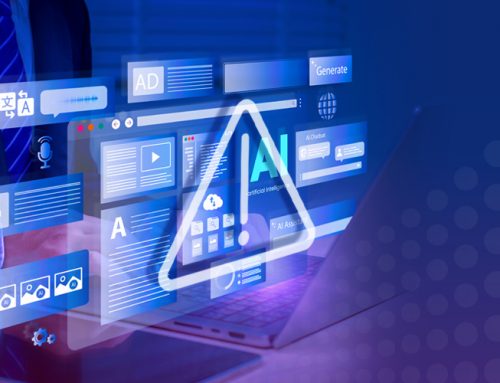Whether we like it or not, cybersecurity threats are something we must always consider. Now, as many employees have started working from home, businesses have had to face a new security challenge. Businesses are subjected to more cyber attacks than ever before, many of which are conducted with new practices.
One of the most important things to remember about cyber attacks is that they are targeted at businesses of all types and sizes. Small businesses present easier targets, however. Cybercriminals know that small businesses lack the budget to protect themselves the way large corporations can.

Major Cybersecurity Threats
In 2021, cybercrimes are expected to cost the global economy $6 trillion. By 2025, this number is expected to increase to more than $10.5 trillion. This will make cybercrime more profitable than the global trade of all illegal drugs.
There are several common cybersecurity threats, including phishing scams and hacking groups. The result of successful cyber attacks include:
- Destroyed data
- Stolen money
- Lost productivity
- Compromised personal and business financial data
- Identity theft
- Reputational damage
The major challenge with many of these consequences is how long-lasting they can be. The damage businesses incur, combined with consequences incurred after the fact, make cybercrime one of the most serious challenges of the century.
Another major cybersecurity challenge is the lack of awareness many businesses have. People are busy, especially business owners. Understandably, many cybersecurity threats can slip through.
One of the most important steps in ensuring protection against cyber threats is an audit in the form of an IT security assessment.
What Is a Cybersecurity Risk Assessment?
Cybersecurity risk assessments are broad. They test multiple potential weaknesses. They also help lead to meaningful security decisions and support effective risk responses.
The goal of a cybersecurity assessment is to summarize the state of a business’s security. The summary of an assessment includes:
- Internal and external cybersecurity vulnerabilities
- Risk mitigation potential
- Highest priority security risks
- Best and most cost-effective solutions
Cybersecurity professionals work with decision-makers to provide an assessment of the security situation. The purpose of their work is to provide a blueprint that could save you from a disastrous cyber attack.
Steps of a cybersecurity assessment
Cybersecurity assessments follow several steps.
1. Identify Important Data
Most businesses don’t have the budget to cover every possible threat. However, it’s not normally necessary to get such comprehensive protection.
The first step in an IT security risk assessment is listing and prioritizing important data by:
- Monetary value
- Importance to the organization
- Legal vulnerabilities
Every assessed asset will be assigned a level of importance. This level of importance will be referred to on an ongoing basis. But how do you assign importance in the first place?
There is a laundry list of questions that can be used to prioritize your data:
- Would losing or exposing this data have a direct financial impact on the organization?
- Would losing this data affect daily operations?
- What are the legal ramifications of losing this data or allowing it to be exposed?
- What reputational damage could be done if this data were leaked?
- If this data were lost, what would it cost to recreate or replace it?
2. Identify Cyber Threats
After prioritizing assets, you need to know what threats those assets face. Cyber threats come in many forms, many of which are not direct attacks by cybercriminals. Data can become compromised due to:
- Unauthorized access
- Misuse of data by persons with authorized access
- Scams targeted at employees with authorized access
- Malware accidentally opened by authorized users
- Corporate espionage
- Organized hacker gangs/groups
3. Calculate Vulnerabilities
After you understand the threats your business faces, you need to prioritize actions based on the chances of a threat taking place.
Vulnerability analysis provides information needed to assess current security measures. Analysis methods include vulnerability analysis, security software analysis, audits, and incidence response.
4. Analyze Current Security
After assessing vulnerabilities, you have to assess how well-equipped current security controls are. Security is maintained through several means which must be individually assessed. Examples include:
- Authentication
- Encryption
- Physical security measures
Security measures can be broken down into two categories. First, there are preventative measures that attempt to stop attacks before they happen. Then, there are detective measures, which attempt to discover attempts to breach an organization.
5. Documentation and Remediation
Cybersecurity risk assessment results are thorough and well-documented, and form the basis for ongoing security analysis. The risk report is passed onto management so they can make informed, data-driven decisions.
Every threat is laid out in a risk report. The corresponding risk and impact on your IT infrastructure will be listed alongside them. This data outlines the remediation steps needed to minimize all the risks that were uncovered. It will also outline the cost of remediation and the justification for each expense.
Depending on the results of the analysis, new security measures may be deemed necessary. New security measures should cover the remaining vulnerabilities you’re not already protected against.
Why It’s Essential to Perform an IT Security Risk Assessment
Many different threats make performing a cybersecurity risk assessment critical. Normally, the results of a cyber security vulnerability assessment justify the cost of undergoing one.
Financial Information Security
Data breaches can often have a direct effect on the finances of any organization. Cyber criminals employ hacking and scamming techniques to gain access to personal and business financial information. Phishing attacks are particularly effective, often costing hundreds of thousands of dollars.
Regulatory Challenges
Depending on the circumstances of a cyberattack, your business could face legal action. This normally happens when businesses lose customer data to criminals while failing to comply with consumer privacy protection regulations. Examples of such regulations include PCI and HIPAA. Compromised customer data also leads to some of the worst reputational hits businesses can face. According to an Applied Research survey, 24% of organizations reported regulatory fines as the most significant cost stemming from cyber attacks.
Cost In Productivity
After businesses start to handle the ongoing costs, lost productivity is another challenge. According to the same survey, the costliest reported consequence of cyberattacks is lost productivity (50%).
Much of the cost in productivity can stem from data loss. Cyberattacks can lead to the loss of trade secrets, code, and other data assets.
What Now?
If you’re concerned that your IT infrastructure might have vulnerabilities that could lead to substantial costs to your business, the best plan of action is to implement a cyber security risk assessment. Speak to your IT provider, who will assess your IT infrastructure and help you to develop a remediation plan.
The process of cybersecurity risk assessment forms a foundation for an ongoing risk assessment policy. Going forward, this policy will determine periodic steps for assessing and addressing cybersecurity threats.
Keep in mind that cybersecurity requires a comprehensive and ongoing effort to remedy. The risk assessment process is at the core of cybersecurity management. It uncovers the risks that your organization faces and provides a reference for vulnerabilities and the costs of failing to mitigate them.
Reach out today to find out if your organization qualifies for a free Cybersecurity Assessment.
Start here to level up your IT.
Click below or call our Rhode Island headquarters at: 401-825-4400.










